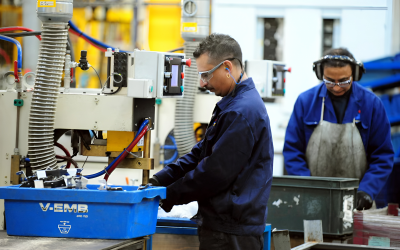The S&P Global Flash U.S. Manufacturing PMI edged up to 52.2 in October, marking a two-month high and continuing a pattern of expansion seen in nine of the past ten months. Factory output expanded for the fifth consecutive month, while new orders rose at the fastest pace in 18 months, driven primarily by domestic demand. However, export orders fell sharply, with sales to China and Europe declining at the fastest rate since February.
Inventories continued to grow, but only marginally, as manufacturers scaled back input purchases following declining backlogs. Supplier delivery times shortened, and input cost inflation, while still elevated due to tariffs, increased at the slowest rate since February. Selling prices accelerated in October but remained below levels seen in the preceding six months, with firms struggling to fully pass costs to customers amid competitive pressures and subdued demand.
Overall business activity reached a three-month high, rising from 53.9 in September to 54.8 in October. New orders showed the largest increase so far this year, supported by growth in both manufacturing and services. Service sector inflation eased slightly, offering some relief despite ongoing cost pressures in manufacturing.
Despite these gains, optimism about future business conditions fell, weighed down by trade policy uncertainty and the ongoing federal government shutdown. Manufacturing optimism declined to its second lowest level since June 2024, even as some firms hope tariffs may encourage domestic production over the coming year.
The data points to a U.S. manufacturing sector maintaining steady growth domestically, yet facing headwinds from weak exports and persistent uncertainties in trade and government policy.
See the article of manufacturing trends and what they mean for business strategy.













.png)
